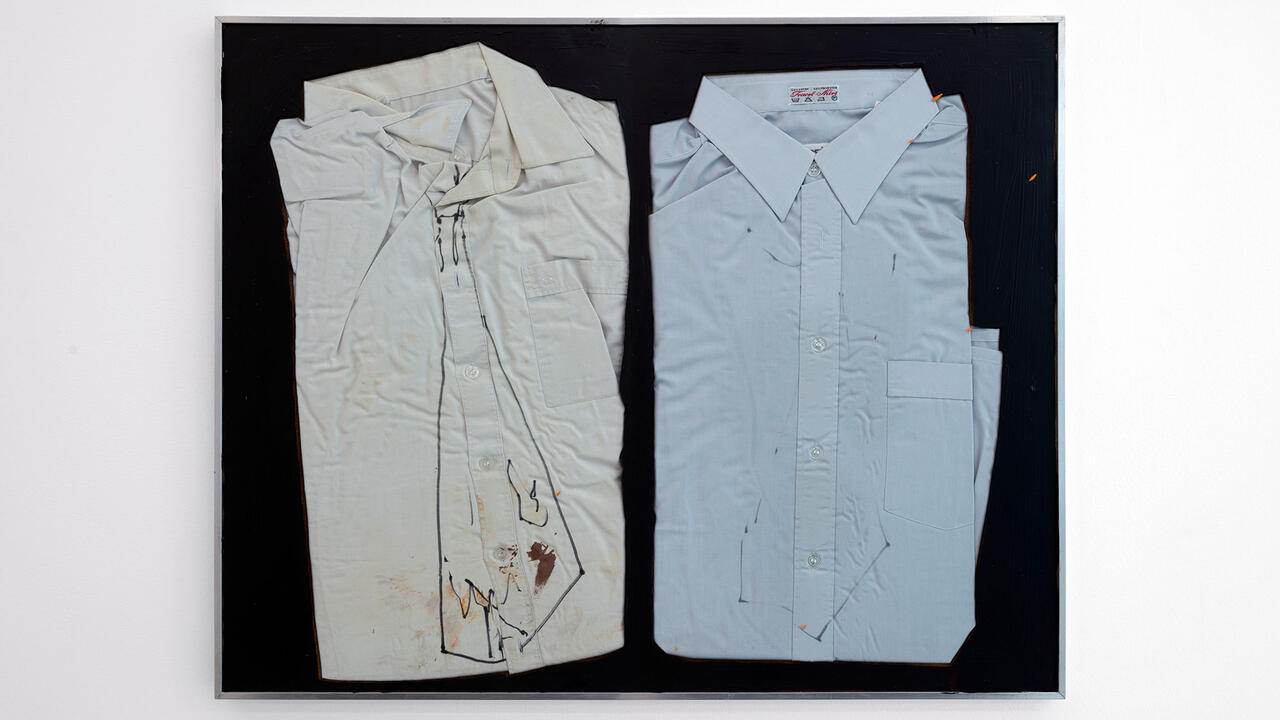Evelyn Taocheng Wang
De Hallen, Haarlem, The Netherlands
De Hallen, Haarlem, The Netherlands

Early in The Nude: A Study in Ideal Form (1956), his paean to Western art’s millennia-old spiritual and libidinal investment in the human body, Kenneth Clark comments: ‘The idea of offering the naked body for its own sake […] simply did not occur to the Chinese or Japanese mind, and to this day raises a slight barrier of misunderstanding.’ It’s an idea reiterated, in less dismissive terms, in a book-length study by French philosopher François Jullien, who ascribes The Impossible Nude (2007) of classical Chinese painting to a distinction in metaphysics. European aesthetics, by way of Ancient Greece, is invested in being, conceiving of ‘form’ (eidos) as a finite point and stable entity; the Chinese tradition has its roots in the Taoist and Buddhist principles of existence, where ‘form’ (ching) is not fixed but flows. I don’t know what Chinese art theory has to say on the question but, in her film The Interview (2017), Evelyn Taocheng Wang explains: ‘Beauty should belong to when the human body dissolving [sic] into a natural environment. [In classical Chinese painting] you could see little figures […] but always inside the huge composition of mountains.’
The short video is one of two screened in the darkened second room of the artist’s exhibition, ‘Allegory of Transience’, at De Hallen. It developed out of an interview that Wang – who was born in Chengdu and is based in Amsterdam – gave as part of the Volkskrant Visual Art Award, which she won in 2016. Pulling Dutch Golden Age paintings from the storage racks of the Franz Hals Museum, which is immediately next to De Hallen in the centre of Haarlem, Wang discusses her first encounter with such works and their influence not only on her conception of art but of Europeaness. As she speaks, a sculpted male model, wearing only a black thong, stands by impassively.

The idea that the body is culturally relative – that what it signifies shifts according to time and place – is central to Wang’s work. A slim publication with a pink cover, easily missed near the exhibition’s entrance, collects the artist’s observations, first published on Facebook, about the artist’s time spent working at an Asian massage parlour in Amsterdam to fund her studies at De Ateliers. While not sexual in nature, the job demanded the performance of an exoticized (and eroticized) ‘Oriental’ femininity, complicated by the fact that Wang is transgender.
Published to coincide with this exhibition, the book is titled Unintended Experience. Like much else in the show, the name seems to suggest, by its very literalness, metaphysical profundity. Or am I falling into the trap of looking for ancient Oriental wisdom where there is none? If so, it is a trap that has been deliberately laid. In a second video, Dusk (2016), the artist begins by paddling a small motor boat across a river, which she hopes will lead her, as the neat calligraphic script of the intertitles suggests, to a ‘new destiny’. The river is a central symbol in Buddhist and Taoist thought: strength without resistance, always moving and always the same. Because of these associations, the intertitles read as koans, even – or, perhaps, especially – when they are awkwardly phrased or utterly banal. (‘I hope this boat is big enough; I hope everything will be fine.’)
Dusk is an in-between time, when creeping shadows make shapes unclear. This fogginess of legibility – Clark’s ‘slight barriers of misunderstanding’ – spills over from the exhibition’s first room, where piles of handmade paper cushions painted with flowers (Tulip Garden, 2016) are surrounded by a series of large-scale works on paper, affixed to the smalt-blue walls with bulldog clips. These drawings, shot through with flashes of watercolour, depict pairs of beguines – lay religious women who devoted themselves to prayer and lived in communities across the Low Countries from the 13th century onwards. The beguines - out of time and out of place - look at ducks, decorate Christmas trees, shower, walk through town. Imposingly rectilinear Protestant church towers read like scholars’ rocks in the inky, Confucian landscapes: objects of contemplation that remind us of the difficulty, always, in seeing things as they really are.
Main image: Evelyn Taocheng Wang, Dusk, 2016, installation view. Courtesy: the artist and De Hallen, Haarlem














